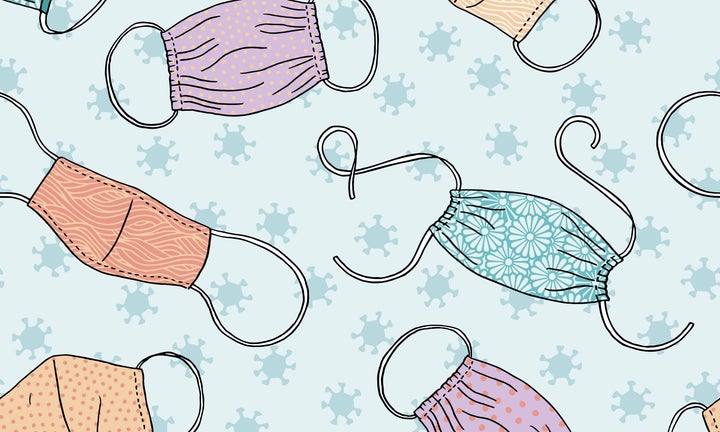Some governments around the world have advised people to wear face coverings in enclosed public spaces where social distancing is not possible.
This might include public transport or in some shops.
“The evidence suggests that wearing a face covering does not protect you, but it may protect others if you are infected but have not developed symptoms,” reads guidance out of the UK.
A face covering isn’t the same as the surgical masks or respirators used as part of PPE by healthcare and other workers; “these should continue to be reserved for those who need them,” the guidance states.
The theory goes that if we wear face covers, the risk of transmission should be reduced. So, how can you make one?
Face coverings aren’t advised for children under the age of two, or those who may find it difficult to manage them correctly – for example, primary school age children who are unassisted, or those with respiratory conditions.
A study by US-based social enterprise Smart Air looked at 30 different materials for DIY coverings, including bra pads, coffee filters, pillow cases, electrostatic cloths, cotton T-shirts, wool, bed sheets, polyester, bandanas. Analysing the effectiveness in filtering coronavirus-sized microparticles, as well as breathability, it recommended denim, bed sheets (80-120 thread count), paper towels and canvas (0.4-0.5mm thick) as the best materials to use.
It doesn’t matter what tutorial you use to make your face covering, as long as the end result is something that covers both your mouth and nose and allows you to breathe properly. Here are a few methods you could try.
How to make a no-sew face cover in 40 seconds
This YouTube tutorial is really easy and takes just 40 seconds to do. Plus, it doesn’t require any sewing skills – phew!
You will need:
- Two elastic bands (or hair bobbles)
- A handkerchief, bandana or similar sized piece of material cut into a square.
Method:
1. Fold the material in half, and then fold in half again.
2. Position the elastic bands about a face width apart on the material.
3. Fold each end of the material over and tuck the flaps into one another (watch the video from 20 seconds to see how it’s done).
4. Carefully put the mask on, popping the elastic bands around your ears and ensuring your nose and mouth are covered.
5. For extra protection, scientists advise adding a sheet of disposable paper towel between the mask layers each time that you wear it to act as a makeshift filter.
This guidance was originally shared on the #Masks4All website, from a group of scientists and researchers.
How to make a face covering from a T-shirt
You will need:
- A T-shirt (ideally size small or extra small)
- Scissors
Method:
1. Cut a straight line across the width of the T-shirt, front and back, approx 20cm from the bottom of the T-shirt. You can go to the government’s website for illustrations to help you make this covering.
2. From a point 2cm below the top right-hand corner of the fabric, make a 15cm horizontal cut through both sides of the fabric that is parallel to the top of the rectangle.
3. Cut down towards the bottom of the fabric until you reach approximately 2cm above the bottom edge. From here, make another 15cm cut that runs parallel to the bottom of the fabric to make a rectangle that can be discarded.
4. To make the ties that go around your ears, cut open the edge of the two long strips of fabric. Unfold the main piece of fabric and place over the mouth and the nose. The four strips will hold the cloth face covering in place and should be tied behind the head and around the neck.
This guidance is from the gov.uk website.

How to make a sewn face covering
You will need:
- Two 25cm x 25cm squares of cotton fabric
- Two 20cm pieces of elastic (or string or cloth strips)
- Needle and thread
- Scissors
Method:
1. Cut out two 25cm x 25cm squares of cotton fabric. Stack the two squares on top of each other.
2. Fold over one side by 3/4 cm and hem, then repeat on the opposite side. Make two channels by folding the double layer of fabric over 1.5cm along each side and stitching this down.
3. Run a 20cm length of elastic (or string or cloth strip) through the wider hem on each side of the face covering. These will be the ear loops. Use a large needle to thread it through. Tie the ends tightly. If you only have string, you can make the ties longer and tie the covering behind your head.
4. Gently pull on the elastic so that the knots are tucked inside the hem. Gather the sides of the covering on the elastic and adjust so the covering fits your face. Then securely stitch the elastic in place to keep it from slipping. These elastic loops fit over the ears.
This guidance is from the gov.uk website.